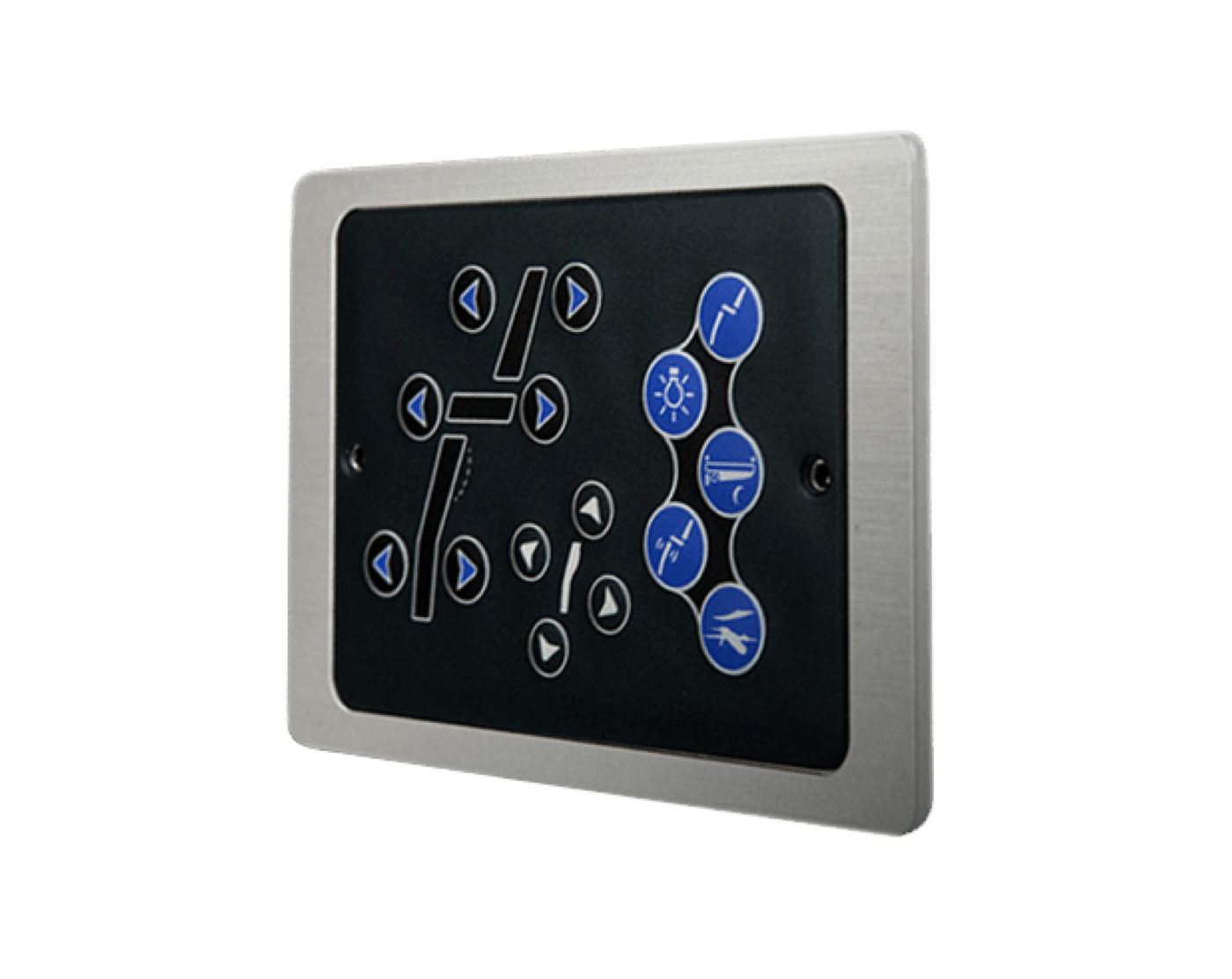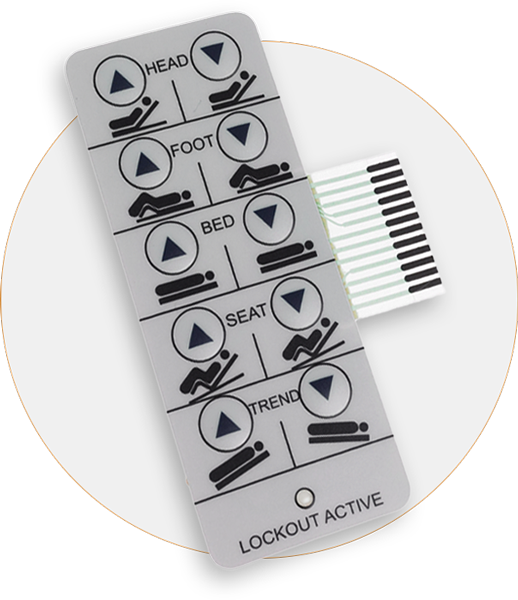How Membrane Switches Are Used in Medical Devices and Equipment
Wiki Article
Comprehending the Significance of Membrane Switches in Individual User Interfaces
Membrane buttons are essential elements in the layout of effective customer interfaces, promoting not only functionality but also boosting visual allure and customer interaction. As we explore the future fads and various advantages associated with Membrane innovation, it ends up being clear that these buttons are more than simply elements; they stand for a merging of innovation and usefulness.What Are Membrane Switches?

The spacer layer, which contains sticky properties, enables the splitting up of the circuit layer from the overlay, guaranteeing that the switch continues to be in a non-activated state until pushed. When pressure is related to the overlay, it presses the spacer layer, connecting the space and completing the circuit in the underlying layer. This style not just minimizes the physical room needed for typical mechanical buttons but likewise boosts the toughness of the device, as Membrane buttons are usually immune to dust, wetness, and other environmental elements.
Frequently located in applications varying from consumer electronics to clinical tools, Membrane buttons are essential to modern-day technology, providing a efficient and easy to use interface that aligns with contemporary style demands.
Benefits of Membrane Buttons
While countless button technologies exist, Membrane Switches deal unique advantages that make them especially preferable in various applications. Among the main advantages of Membrane buttons is their small layout, which permits space-saving executions in devices where property is limited. Their slim account not just improves visual appeal yet also helps with light-weight building and construction.Another significant benefit is their resistance to ecological variables. Membrane switches are usually secured against wetness, dust, and impurities, making them excellent for use sought after atmospheres, such as medical devices and commercial devices. This longevity prolongs the lifespan of the button, reducing maintenance prices and improving dependability.
Furthermore, Membrane buttons can be personalized to meet details style demands, integrating one-of-a-kind graphics and shades that improve user communication. Their responsive feedback alternatives can likewise be tailored to supply an enjoyable individual experience. In addition, Membrane buttons are cost-efficient, especially in high-volume applications, as they can be generated efficiently.
Applications in Different Industries

In the customer electronics field, Membrane switches are widespread in gadgets such as microwaves, washing devices, and push-button controls. Their responsive feedback and visual options improve user experience while giving a sleek, modern-day appearance. Furthermore, vehicle manufacturers make use of Membrane switches in dashboard controls and infotainment systems, where space is limited, and user interaction is critical.
In addition, the industrial field leverages Membrane switches in control panels for equipment and equipment, enabling for instinctive operation in often harsh settings. Their resistance to chemicals and moisture ensures durability and integrity in these applications. Overall, the adaptability of Membrane Switches adds substantially to their prevalent use, making them indispensable in numerous technological domain names.
Layout Factors To Consider for Membrane Switches

When making Membrane switches, a number of essential factors to consider must be thought about to guarantee optimal functionality and user experience. Firstly, the option of materials is important; choosing resilient, high-quality substratums can enhance the button's long life and resistance to environmental factors such as moisture and temperature level changes.
Secondly, the style of the graphic overlay need to prioritize clearness and convenience of usage. Icons and text need to be understandable, and the format must facilitate intuitive interaction (membrane switches). Furthermore, responsive responses is necessary; integrating a responsive dome or various other mechanisms can enhance the customer experience by offering physical confirmation of activation
Another essential aspect is the switch's electric performance. Designers must guarantee that the conductive traces are effectively made to reduce resistance and prevent site here signal disturbance. This involves assessing the needed actuation pressure and ensuring compatibility with the electronic elements they will certainly user interface with.

Full Report
Future Patterns in Membrane Technology
As technology continues to advance, Membrane switches are positioned to evolve considerably, driven by developments in materials and making strategies. One arising fad is the incorporation of innovative products, such as flexible substrates and conductive inks, which improve durability and decrease the overall weight of Membrane buttons. These products not only improve the responsive response however also enable the layout of buttons that can withstand harsher environmental conditions.Additionally, the combination of touch-sensitive modern technologies is transforming traditional Membrane Switches right into even more interactive interface. Capacitive touch sensors embedded within Membrane button panels can give an extra responsive and user-friendly customer experience, straightening with the growing need for sleek, modern-day layouts in customer electronics.
Furthermore, improvements in printing methods, such as electronic and 3D printing, allow rapid prototyping and customization of Membrane buttons. This versatility allows makers to react a lot more swiftly to market needs and customer preferences.
Lastly, sustainability is click here to read coming to be a significant emphasis, with manufacturers exploring green materials and processes. As these trends unravel, the future of Membrane innovation assures boosted capability, visual allure, and environmental responsibility, solidifying their function in sophisticated interface throughout different industries.
Verdict
In final thought, Membrane Switches stand for a vital element in the layout of user interfaces, incorporating performance with visual adaptability. As advancements in modern technology proceed, the advancement of Membrane switches is expected to further fine-tune user interfaces, driving innovation and boosting usability in a significantly complex technological landscape.Membrane buttons are integral components in the design of efficient user interfaces, assisting in not just performance yet also boosting aesthetic charm and customer interaction.Membrane Switches offer as a crucial part in different individual interfaces, helping with a seamless communication in between individuals and electronic tools.While countless switch modern technologies exist, Membrane Switches deal unique benefits that make them particularly desirable in various applications.In addition, Membrane buttons can be tailored to fulfill particular design demands, including special graphics and shades that improve customer interaction.In verdict, Membrane Switches represent an important component in the layout of user interfaces, combining performance with aesthetic flexibility.
Report this wiki page